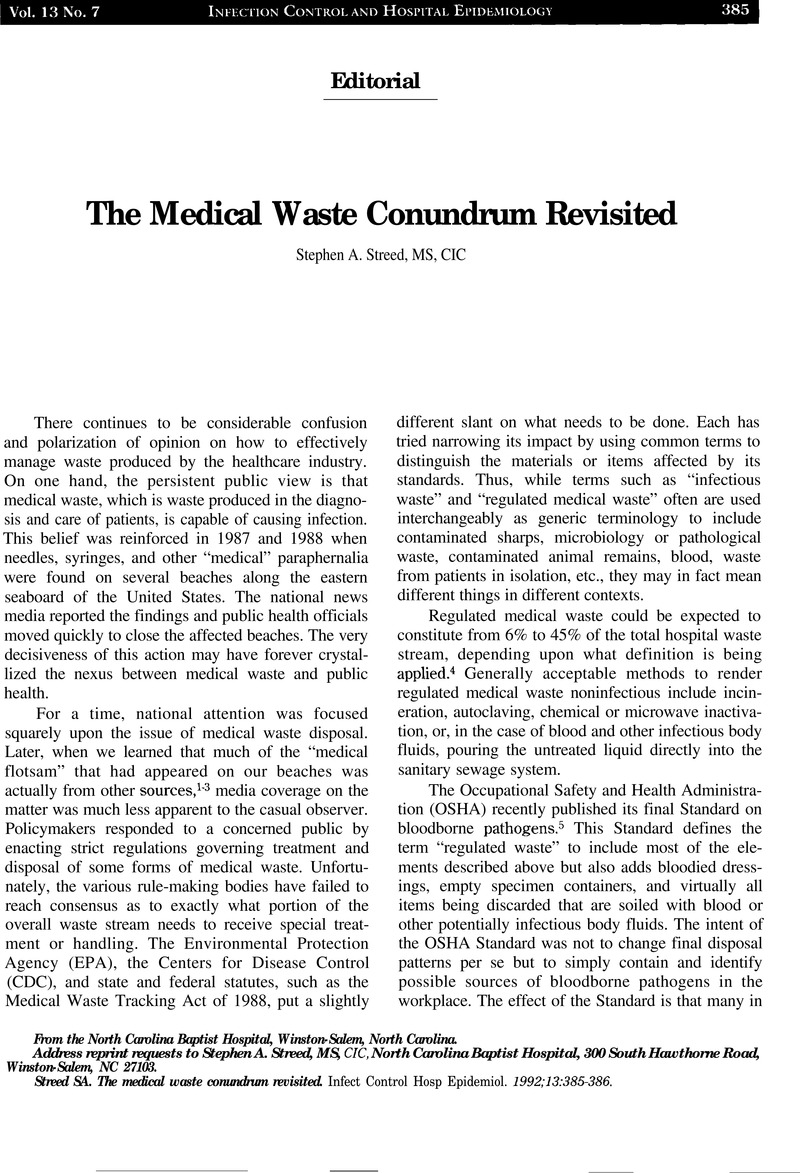No CrossRef data available.
Article contents
The Medical Waste Conundrum Revisited
Published online by Cambridge University Press: 21 June 2016
Abstract
An abstract is not available for this content so a preview has been provided. As you have access to this content, a full PDF is available via the ‘Save PDF’ action button.

- Type
- Editorial
- Information
- Copyright
- Copyright © The Society for Healthcare Epidemiology of America 1992
References
1.Report of National Marine Debris Data Base. Washington, DC: Center for Marine Conservation: 1989.Google Scholar
2.Rockefeller Institute of Government. Perspectives on Medical Waste. Albany. NY: Nelson A. Rockefeller Institute of Government; 1989.Google Scholar
3.Investigation of Sources of Beach Wash-ups. Albany, NY: New York State Department of Environmental Conservation; 1988.Google Scholar
4.Rutala, W, Weber, DJ. Infectious waste-mismatch between science and policy. N Eng J Med. 1991;325:578–581.Google Scholar
5. Occupational Exposure to Bloodbome Rztkogens; Final Rule. United States Department of Labor. Occupational Safety and Health Administration. 29 CRF Part 1910.1030. December 6, 1991.Google Scholar
6.Karpiak, J, Pugliese, G. Medical waste-declining options in the 90s. Am J Infect Control. 1991;19:8–15.Google Scholar
7.Keene, J. Medical waste: a minimal hazard. Infect Control Hosp Epidemiol. 1991;12:682–685.Google Scholar
8.The Association for Practitioners in Infection Control. Position paper: medical waste (revised). Am J Inf Control. 1992;20:73–74.Google Scholar
9.Jetté, LP, Lapierre, S. Evaluation of a mechanical/chemical infectious waste disposal system. Infect Control Hosp Epidemiol. 1992;13:387–393.Google Scholar
- 1
- Cited by




